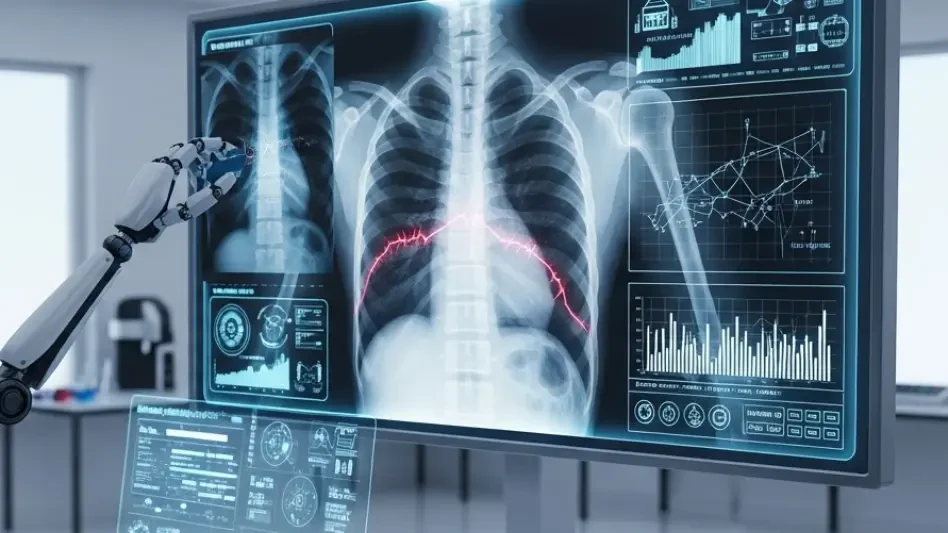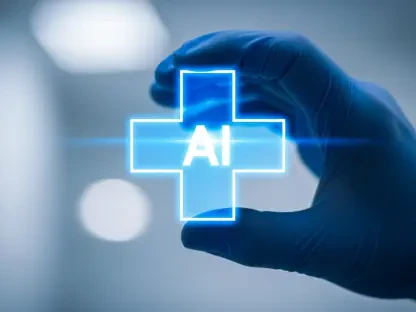What happens when an algorithm holds the power to diagnose a life-threatening condition, yet no one can fully explain how it reached its conclusion? In 2025, artificial intelligence (AI) is no longer a novelty in healthcare—it’s a cornerstone, shaping everything from cancer detection to patient care plans. But with this power comes a chilling risk: a single error could mean a missed diagnosis or a breach of sensitive data, shaking the foundation of trust in medical systems. This feature dives into the critical role of accreditation and oversight, revealing how these safeguards ensure AI doesn’t just innovate but protects lives with unwavering reliability.
Why Oversight Matters in Healthcare AI
The integration of AI into healthcare has transformed the industry, offering tools that can predict patient outcomes with startling accuracy and streamline hospital operations. Yet, the stakes are unimaginably high. A flawed AI system could misinterpret medical imaging, leading to delayed treatment, or harbor biases that disproportionately harm certain demographics. The need for stringent oversight is not just a regulatory checkbox—it’s a lifeline ensuring that technology serves humanity without causing harm.
Beyond the immediate risks, the erosion of public trust looms large. If patients and providers cannot rely on AI tools, the promise of innovation could collapse under skepticism. Oversight acts as the bridge between cutting-edge tech and real-world safety, establishing guidelines that hold developers accountable. This balance is essential to prevent healthcare from becoming a testing ground for unproven algorithms.
The Dual Edge of AI: Breakthroughs and Risks
AI’s potential in healthcare is nothing short of revolutionary. Tools that analyze X-rays faster than any radiologist or predict patient deterioration before symptoms escalate are saving lives daily. Studies indicate that AI-driven diagnostics can reduce human error by up to 40%, a statistic that underscores its transformative impact on clinical precision.
However, this promise is shadowed by peril. Algorithmic bias, often stemming from unrepresentative training data, can skew results—potentially prioritizing one group of patients over another without intent. Data privacy breaches are another looming threat, as AI systems handle vast troves of personal health information. These risks highlight a pressing truth: without rigorous checks, AI could deepen inequities or expose vulnerabilities in an already sensitive field.
Accreditation as the Bedrock of Trust
Accreditation emerges as the cornerstone for safe AI deployment, providing a framework to evaluate systems for accuracy, fairness, and security. It’s not merely about meeting standards; it’s about validating that an AI tool for detecting breast cancer, for instance, doesn’t miss critical cases due to flawed design. Organizations like URAC lead the charge with healthcare-specific certifications, ensuring tools are vetted for real-world application.
This process also tackles deeper issues like bias mitigation and privacy protection. Consider an AI system trained on data that underrepresents minority groups—accreditation demands adjustments to prevent skewed outcomes. Additionally, it builds confidence among stakeholders, from insurers wary of untested tech to patients entrusting their lives to algorithms. Frameworks like ISO/IEC 42001 and The Joint Commission’s efforts complement these standards, though URAC’s targeted focus on healthcare sets it apart.
The impact of accreditation is tangible. Rural hospitals, often short on specialists, rely on certified AI to flag critical conditions early, bridging gaps in care. This seal of approval transforms AI from a potential liability into a trusted partner, ensuring that innovation aligns with ethical responsibility.
Voices from the Trenches: Real-World Perspectives
Insights from industry leaders paint a vivid picture of accreditation’s necessity. A URAC executive emphasized, “Transparency and continuous evaluation aren’t optional—they’re the backbone of safe AI in healthcare.” This sentiment reflects the organization’s multi-stage certification, which scrutinizes everything from data security to algorithmic fairness before and after deployment.
Healthcare providers on the front lines echo this urgency. At a small clinic in the Midwest, a certified AI tool recently identified early signs of sepsis in a patient, enabling intervention hours before traditional methods would have caught it. Such stories illustrate the life-saving potential of accredited systems. Meanwhile, research reveals a stark reality: up to 30% of unchecked AI tools in healthcare show bias, a statistic that accreditation aims to address through rigorous testing.
These perspectives—from executives to clinicians—highlight a shared conviction. Oversight isn’t a burden; it’s a vital mechanism that turns raw technology into a reliable ally. The human element, often lost in discussions of AI, comes alive through these accounts, showing how standards directly impact patient outcomes.
Practical Steps to Strengthen AI Governance
How can the healthcare ecosystem ensure AI serves without harm? Adopting robust standards is a starting point—URAC’s certification process, for instance, evaluates transparency and bias mitigation at every stage. This thorough approach sets a benchmark for developers and providers aiming to integrate AI responsibly.
Continuous monitoring is equally critical. As AI systems evolve through learning, re-certification ensures they remain safe and effective over time. Engaging a wide range of voices—clinicians, ethicists, and patient advocates—in the accreditation process further enriches oversight, addressing diverse needs. Training healthcare staff to understand and use certified tools also maximizes benefits while curbing misuse.
These actionable strategies form a roadmap for governance tailored to healthcare’s unique demands. From developers crafting algorithms to hospitals implementing them, each stakeholder has a role in upholding safety. This collective effort is the key to embedding AI as a trusted force in medicine, ensuring it enhances rather than endangers lives.
Reflecting on the Path Forward
Looking back, the journey of AI in healthcare has been marked by both awe-inspiring progress and sobering challenges. The stories of lives saved through accredited tools stand as testaments to what is possible when innovation meets accountability. Yet, the risks of bias and breaches serve as stark reminders that vigilance is non-negotiable.
Moving ahead, the focus must shift to scaling these safeguards. Policymakers should prioritize funding for specialized accreditation programs, while developers need to embed oversight into their design processes from day one. Healthcare leaders, meanwhile, ought to champion training initiatives that prepare staff for an AI-driven future. By fostering collaboration across sectors, the industry can ensure that technology remains a servant of humanity, not a source of harm.









